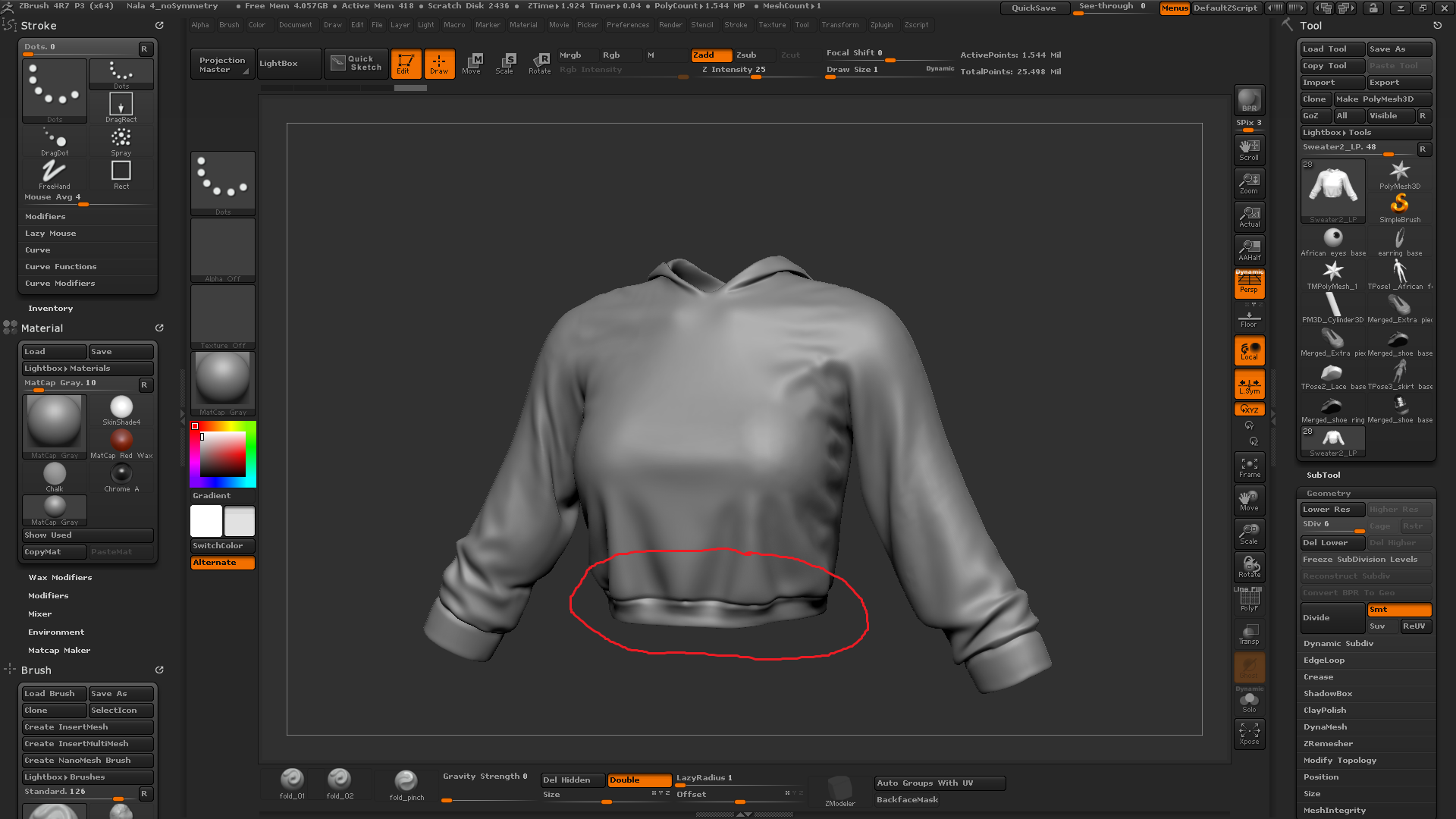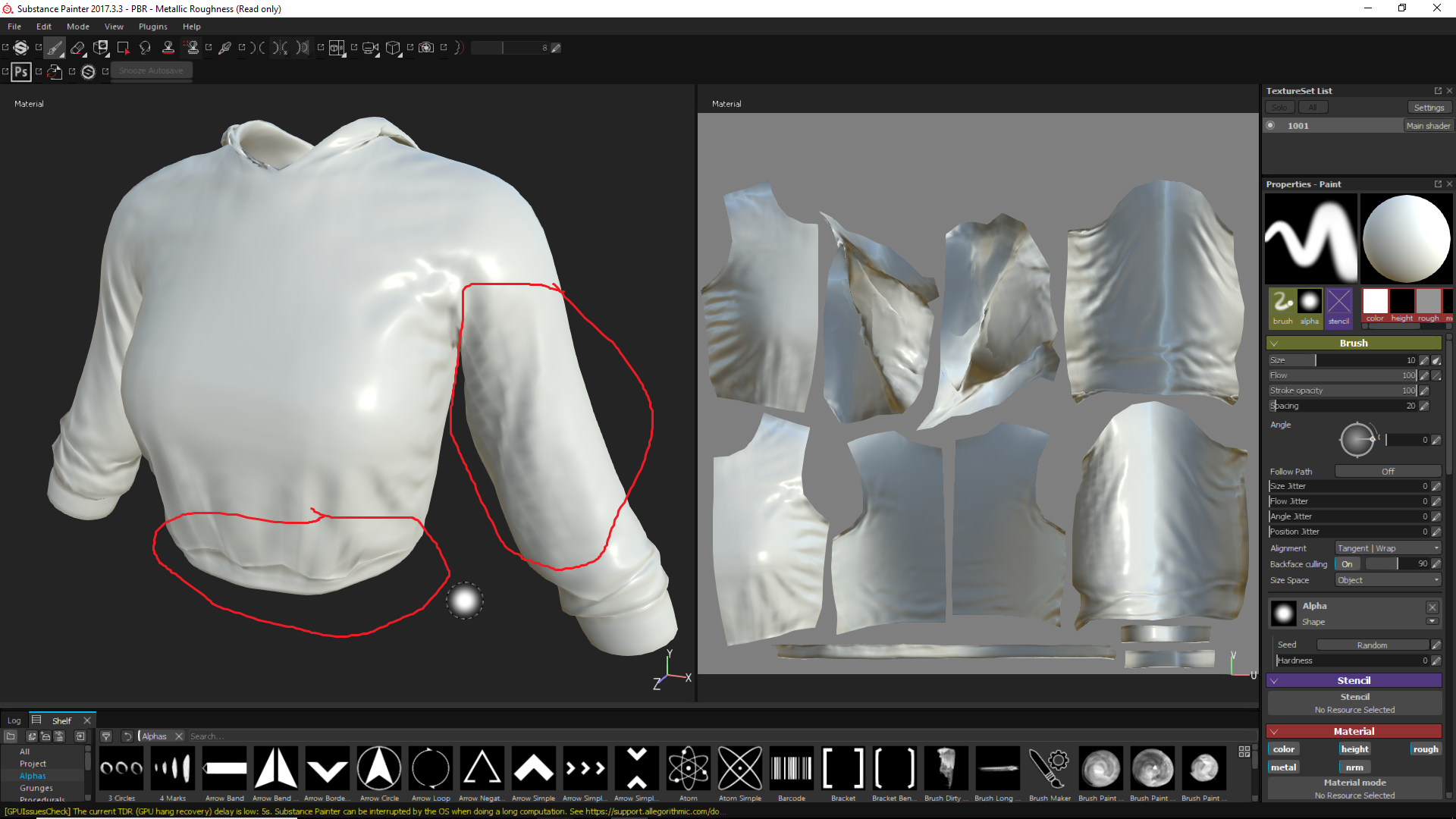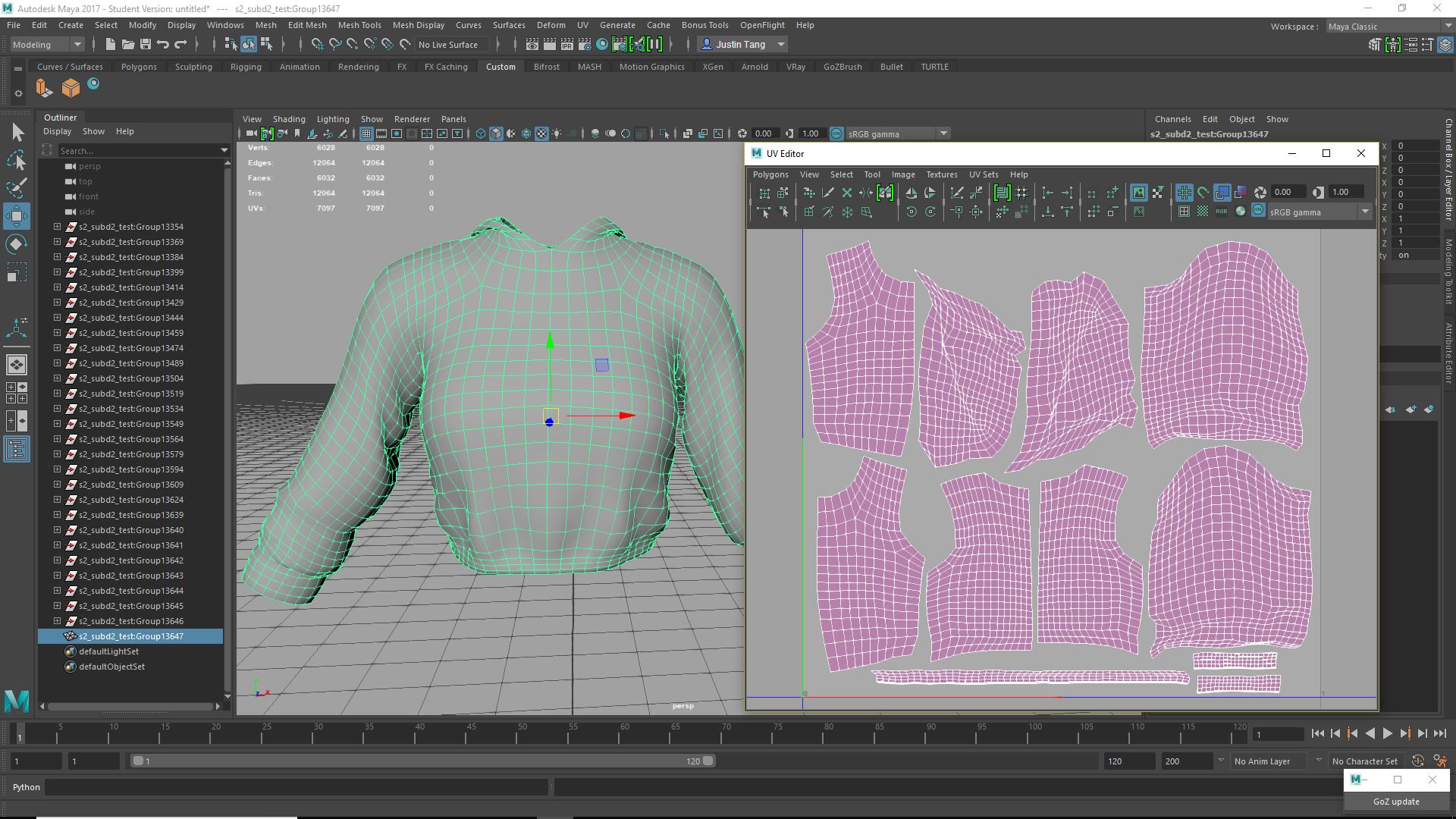The BRAWL² Tournament Challenge has been announced!
It starts May 12, and ends Oct 17. Let's see what you got!
https://polycount.com/discussion/237047/the-brawl²-tournament
It starts May 12, and ends Oct 17. Let's see what you got!
https://polycount.com/discussion/237047/the-brawl²-tournament
How do I fix my workflow for trying to make real-time clothes?
Creating real-time clothes has always been my weakness, and I'm not sure if I have the proper workflow down for creating UV's for clothes with thickness. My current process is
1) Create a base in Marvelous Designer
2) Export out obj with thickness rendered
3) Retopo using quad-draw in Maya
4) Extrude result slightly inward until I get desired thickness for clothes (outer and inner UV's are stacked on top of each other)
5) UV the edge "rims" (the thick parts aka the sleeve area, the bottom-most area, and the hood opening) so they're not undefined in UV space
6) Bake in Substance Painter, XNormal, or Marvelous Toolbag 3
7) fail every time?????????????
In the SP shot the normals for ONLY the front half of the sweater are seemingly reversed, and I also get these strange shading artifacts on the sleeve. Idk which stage my problem is coming from, I could really use the help!



1) Create a base in Marvelous Designer
2) Export out obj with thickness rendered
3) Retopo using quad-draw in Maya
4) Extrude result slightly inward until I get desired thickness for clothes (outer and inner UV's are stacked on top of each other)
5) UV the edge "rims" (the thick parts aka the sleeve area, the bottom-most area, and the hood opening) so they're not undefined in UV space
6) Bake in Substance Painter, XNormal, or Marvelous Toolbag 3
7) fail every time?????????????
In the SP shot the normals for ONLY the front half of the sweater are seemingly reversed, and I also get these strange shading artifacts on the sleeve. Idk which stage my problem is coming from, I could really use the help!




Replies
1) bake outer shell of clothes
2) extrude inward
3) (if the inner clothes geo is needed) offset inward shell 1 unit right of UV space for unique normals
That makes sense, I'll try it after work tonight. However, what if the clothes has a clear visible inside, like the head part of a hoodie, or the inside of the skirt?
If I'm making a full real-time character and am using a multi-tile workflow for texture maps, is it correct to just offset all the visible inside shells from all objects into one UV map? Or is it better to abandon multi-tile texturing completely and restrict each object to the 0-1 space (and offset inside parts over as necessary)?
I'm aware that MD doesn't give the cleanest/most realistic geometry, but I try to get the basic form as close as possible to the final look so there isn't as much sculpting involved in Zbrush. I know I need improvement in both areas, so it's a work in progress!
I agree, only shelling or capping the areas that matter will save you a bunch of tris and precious UV space.
2 sided mats, do come at a slightly higher rendering cost because it will render that geometry twice, first to get the lighting on the outer shell then to get the inner shell, so keep that in mind. It's not something you want to do on all objects, but if it allows you to shave out a bunch of triangles or keeps you from having to curate specific areas, then it might offset the cost. I don't want to make it sound like it's an expensive shader trick, It is less expensive than opacity and only slightly more expensive than the cheapest shader. I doubt you would see it affect your FPS, especially if it's a portfolio piece.
I agree, optimization is important but the question of weather you shell it, or use a shader will be pretty specific to the game, the engine and the model. It's also not hard to change so hardly anyone is going to freak out and use it as an excuse to not hire you.
Your technical decisions will come up in an interview, if they don't bring them up you probably should. It will help if you can explain the other routes you can take and why you choose this route for this piece but that you can easily modify it to suit other needs. Being flexible and offering your higher ups different avenues is important to getting something that looks good, in game.